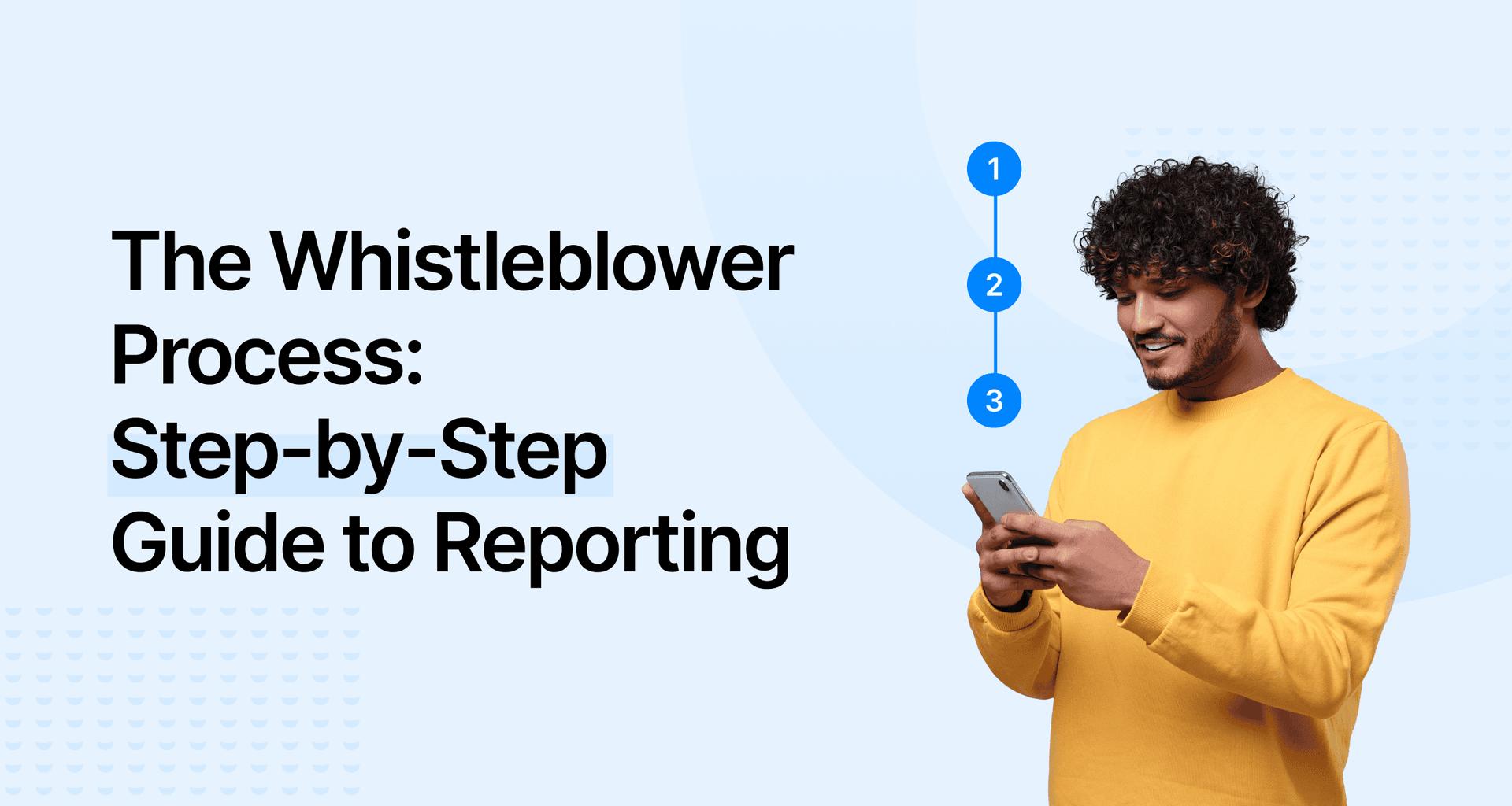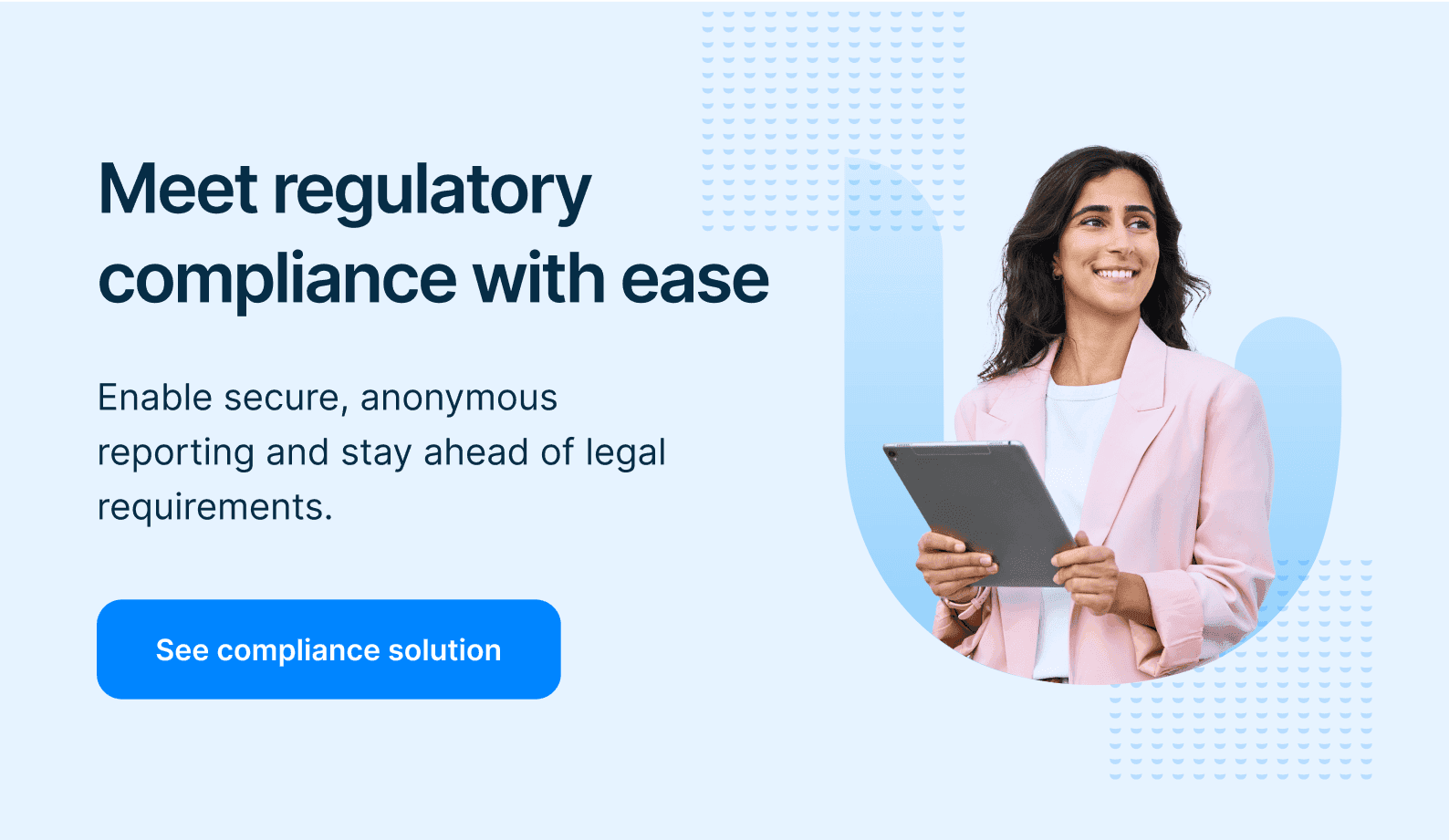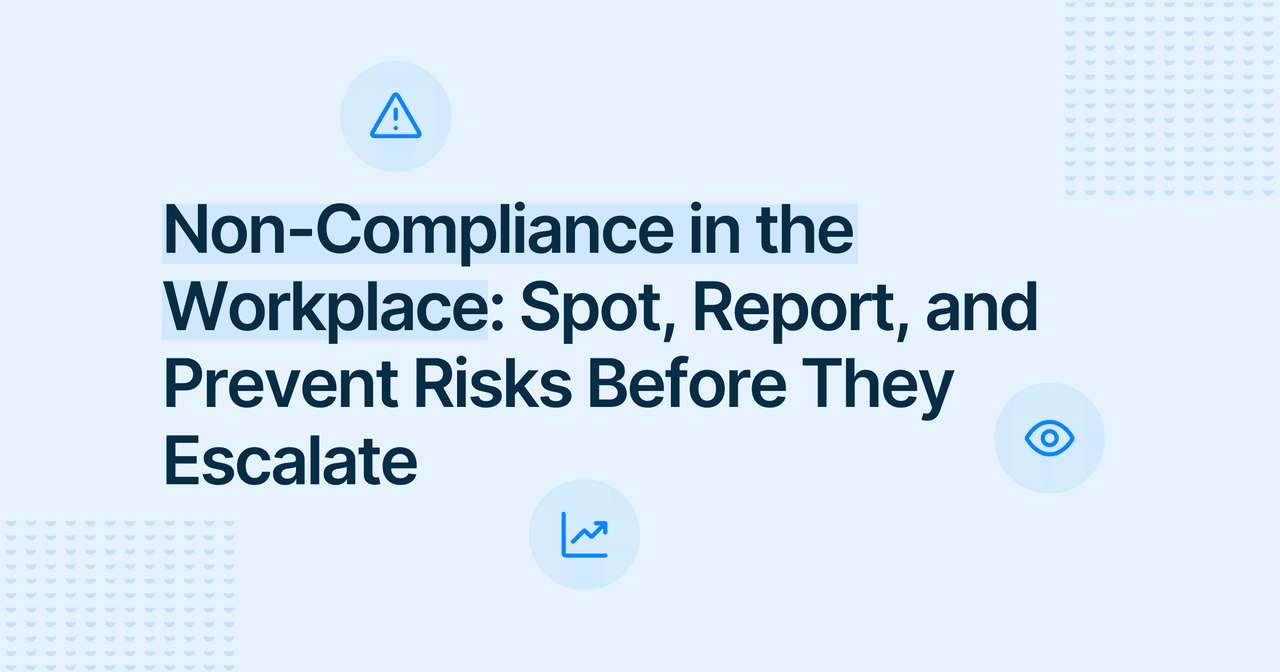



Discover the benefits of a transparent organization!
Try our free platform and strengthen the culture of openness in your team.
Whistleblowing

Ry Hallada
Content Manager
Published
2024-09-24
Reading time
3 min


Table of contents
Subscribe to our newsletter
How would you describe the whistleblower process? Understanding and reporting unethical or illegal behavior in an organization can be daunting. However, it’s essential for protecting employees and an organization's integrity. With a growing emphasis on establishing an effective whistleblowing process, one that ensures the safety of the whistleblower and leads to meaningful resolutions, it is priceless.
In this guide, we’ll look at the SEC whistleblower process and help you understand the critical stages, from identifying misconduct to filing a complaint. Whether you're dealing with fraud, harassment, or other misconduct, knowing your rights and the proper channels for safe reporting is important.
Whistleblowers play a pivotal role in upholding transparency and accountability by speaking up. In many cases, whistleblowing can expose serious issues that might go unnoticed, allowing organizations to address them before they cause further harm.
Whether it’s financial misconduct or workplace safety violations, a secure, user-friendly whistleblower reporting process makes it easier to report wrongdoing.
So, how does the whistleblower process flow? At its core, the whistleblower complaint process protects the whistleblower’s identity while providing a clear path for reporting misconduct.
One of the most common tools is the whistleblower hotline process, where individuals can anonymously report their concerns. From online forms to mobile apps, organizations are implementing secure systems to ensure that whistleblowers can submit their reports safely.
To summarize, the main 3 steps in the whistleblowing process are:
Whistleblowers often ask, "What are the three steps in the whistleblowing process?" or "What are the four steps to the whistleblowing process?" The answer lies in following these key actions, which ensure both the whistleblower and the organization can navigate the situation effectively.
The process of whistleblowing plays a vital role in maintaining transparency within organizations. From identifying misconduct to filing a report and participating in investigations, whistleblowers provide a critical service that helps organizations stay accountable.
If you find yourself in a position to report unethical behavior, use established systems like the whistleblower hotline process to ensure your concerns are heard and your identity is protected. For more information or support in understanding what is the process of whistleblowing, consider leveraging a comprehensive solution like FaceUp.
Ready to see how FaceUp can transform your organization's whistleblowing process? Book a demo with a FaceUp specialist today to explore how our platform can help you build a secure and effective whistleblowing system that supports transparency and protects both employees and your organization.




Try our free platform and strengthen the culture of openness in your team.
Keep Reading

Alaa El-Shaarawi2025-12-087 min
Workplace Environment

Alaa El-Shaarawi2025-12-058 min
Legal & Compliance

Alaa El-Shaarawi2025-12-048 min
Legal & Compliance

Alaa El-Shaarawi2025-12-037 min
Legal & Compliance